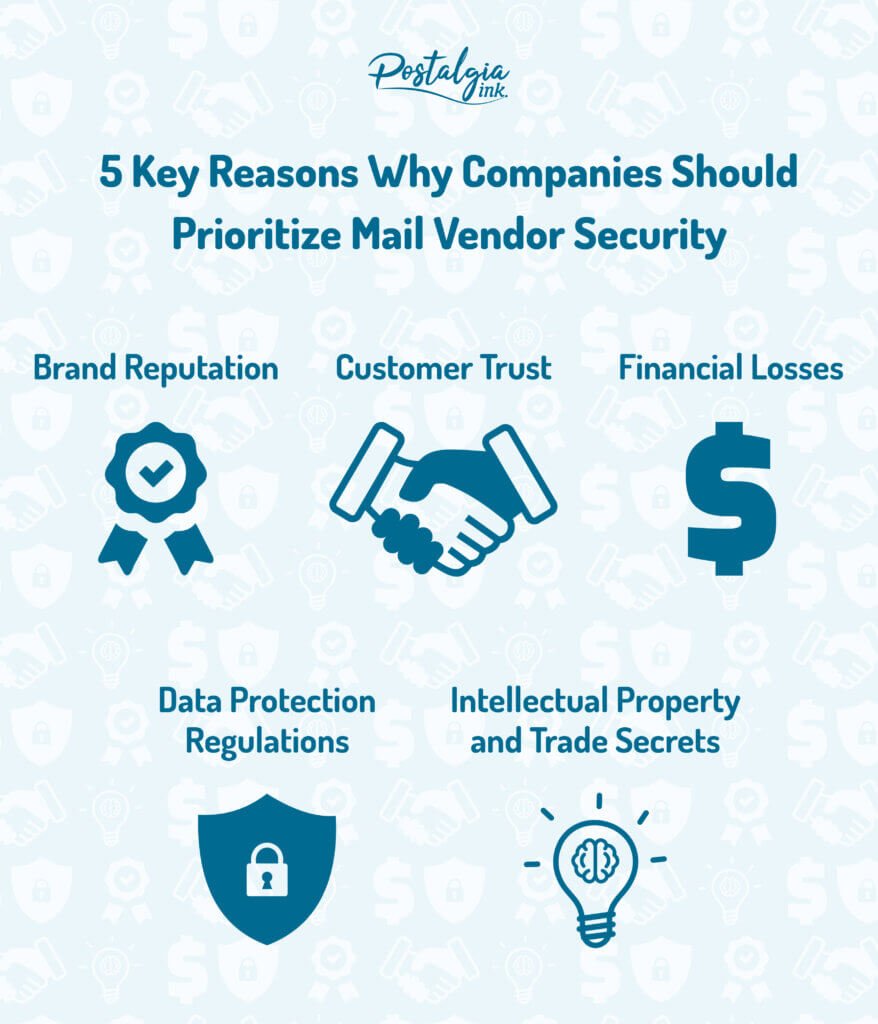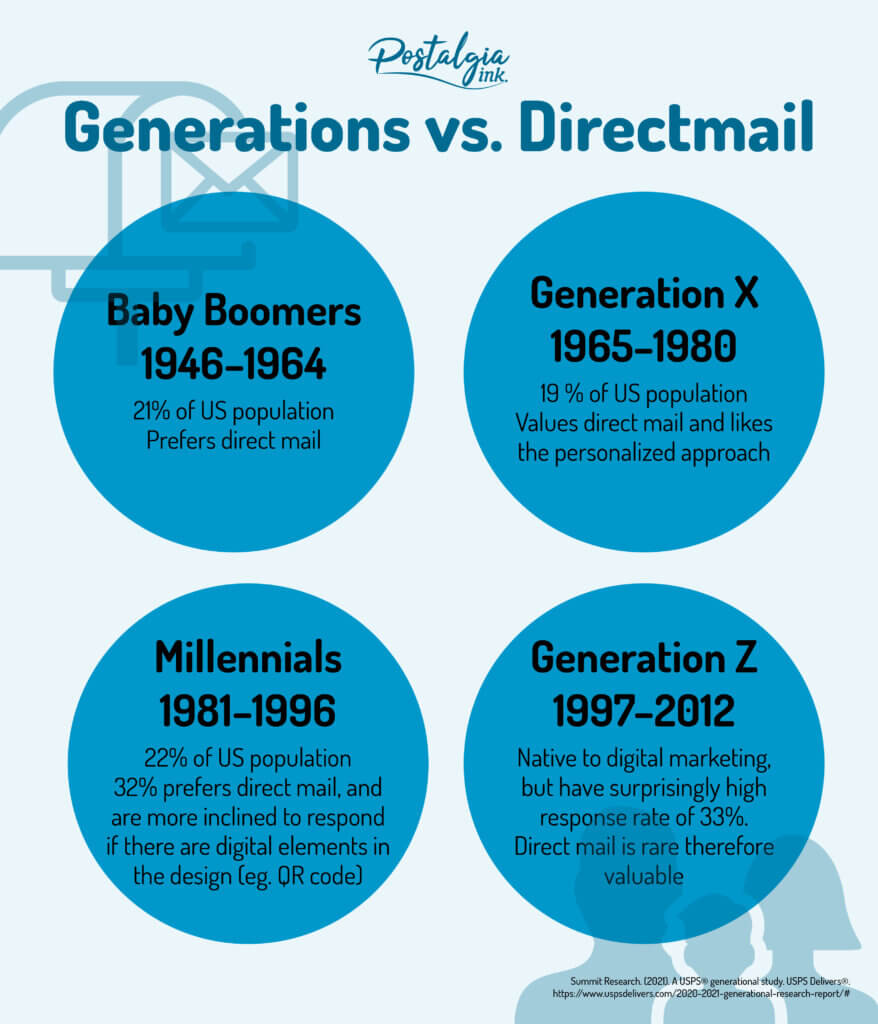INTRODUCTION
Amidst the interconnectedness of modern business operations, one critical aspect demands attention: mail vendor security. Verizon released the “2019 Data Breach Investigations Report”, which yielded statistics that are cause for concern. In 2018, 34% of data breaches involved internal participants and 71% of breaches are financially motivated.
In the mail industry mail service providers, mail procurement companies, and marketing agencies who handle sensitive data such as customer health information, donor lists, and home addresses must tighten up their data security. Attacks can come in many forms through malicious email links, hacked passwords, or unauthorized server access to name a few. Once data has been accessed attackers typically demand a ransom or simply sell the information.
As companies embrace digital transformation, the security of communication channels takes center stage. The implications are far-reaching, touching upon legal compliance, brand reputation, financial stability, customer trust, and the safeguarding of invaluable intellectual property. In this age of data-driven decision-making, understanding the five key reasons why companies should prioritize mail vendor mail security isn’t just prudent—it’s essential.
Key Topics
1. Why are Data Protection Regulations Important?2. How Might a Data Breach Affect Brand Reputation?
3. Does Poor Data Security put Companies at Financial Risk?
4. How can Properly Vetted Mailers Improve Customer Trust?
5. Why is it Important to Protect Intellectual Property and Trade Secrets?

1. Why are Data Protection Regulations Important?
Compliance with data protection regulations such as GDPR and HIPAA demands a meticulous approach to handling sensitive information. What’s interesting is that this responsibility doesn’t end with the organization itself; it extends to the partners they collaborate with, including mail vendors. The concept of third-party responsibility is crucial here. Companies are accountable not just for their own actions, but also for the practices of the vendors they engage. This includes mail vendors, who must align their security measures with these regulations to avoid potential legal consequences.
The motivation for this diligence boils down to one key factor: avoiding penalties. Failing to comply with these regulations can lead to substantial fines and legal actions that can significantly impact a company’s financial standing. Adherence to data protection regulations is not merely a procedural matter but a strategic move to ensure financial stability and maintain a solid reputation.
2. How Might a Data Breach Affect Brand Reputation?
A breach in security involving a mail vendor has the potential to wreak havoc on a company’s standing. One of the most critical ways it can hurt is by taking a toll on the reputation of the company itself. Imagine a scenario where customer trust and loyalty start to crumble, all because their personal information wasn’t handled with the care they expected.
It’s not just the trust of customers that’s at stake. Bad news travels fast, and in this age of information, news of a security breach could spread quickly. The aftermath could lead to a wave of negative press, causing significant damage to the company’s public image. What customers think about a company matters a lot. When a company handles their data responsibly and securely, it sends a message that it’s reliable and takes its responsibilities seriously.
Data breaches have become a worrying norm, and a company’s approach to protecting sensitive information has a direct impact on how customers view it. It’s not just about following rules; it’s about preserving a sense of trust, responsibility, and dependability in the eyes of the people it serves.
3. Does Poor Data Security put Companies at Financial Risk?
The repercussions of security breaches ripple through a company’s operations, touching upon various aspects including legal matters, finances, and reputation. These breaches can set off a chain of events, ranging from legal actions and fines to the daunting challenges of addressing the breach’s impact on the company’s financial standing.
There are the legal and regulatory costs. After a breach, the company finds itself navigating a complex landscape of legal responsibilities and regulatory compliance. Then comes the realm of remediation expenses. Handling a breach means diving into the intricate world of digital forensics, aiming to pinpoint how the breach occurred and the extent of the damage. Alongside this, investments are needed for data recovery efforts to minimize data loss. Implementing heightened security measures becomes imperative to prevent future breaches, and these measures often require substantial financial resources.
Security breaches can lead to lawsuits initiated by those whose data has been compromised. These lawsuits can result in settlements that can impose a heavy burden on a company’s financial resources. In essence, security breaches are not isolated events; they carry a multifaceted impact that reaches into a company’s financial well-being. The combination of legal expenses, remediation efforts, and potential litigation makes it clear that the cost of a breach extends far beyond the immediate aftermath, emphasizing the importance of robust cybersecurity measures.
4. How can Properly Vetted Mailers Improve Customer Trust?
In the realm of business, customer trust is the bedrock on which success is built. Companies are entrusted with safeguarding sensitive customer data, and any lapse in this responsibility can have serious consequences. Failing to ensure the security of vendor communications can trigger a chain reaction, resulting in customer churn and the spread of negative word-of-mouth.
One crucial factor affected is customer retention and loyalty. When a security breach occurs, it shakes the foundation of trust that customers have placed in the company. This loss of confidence can lead customers to question whether their information is truly safe in the company’s hands. Consequently, customers might decide to move on, seeking services from companies they believe can better protect their data.
Effective security practices when it comes to mail vendors can provide a significant competitive advantage. In a crowded marketplace, a company that can demonstrate robust security measures not only reassures its existing customer base but also attracts security-conscious individuals seeking reliable service providers. This forms the basis for the company to stand out from the competition and gain an edge in the market.
5. Why is it Important to Protect Intellectual Property and Trade Secrets?
Mail holds more than just messages; it’s a vessel for valuable intellectual property and closely guarded trade secrets. But here’s the catch: if security around mail communications is lax, it can open the door for a high-stakes game of intellectual property theft and economic espionage.
At the heart of the matter lies the recognition that mail is often a treasure trove of crucial assets. Confidential information, proprietary data, and the intellectual property that underpins a company’s success are frequently exchanged through mail. These assets are the lifeblood of innovation and competitiveness, making their protection paramount.
The term “economic espionage” might sound like something out of a spy movie, but it’s a real concern. When mail security is compromised, it opens the door for harmful perpetrators to swoop in and snatch up these valuable assets. Whether it’s a competitor seeking an edge or a third party looking to cash in on stolen information, the consequences can be dire.
CONCLUSION
Within the intricate web of data protection regulations, the safeguarding of brand reputation, the mitigation of financial losses, the preservation of customer trust, and the defense of intellectual property and trade secrets, the imperative of prioritizing mail vendor security becomes resoundingly clear. Compliance with vendor security regulations reflects not only legal adherence but also a strategic measure to ensure financial stability and uphold reputation. The resilience of customer trust rests upon secure vendor communications, with breaches potentially triggering customer churn and negative word-of-mouth. In a competitive landscape, effective security practices surrounding mail vendors not only retain existing clientele but also attract security-conscious individuals, fostering market differentiation. Recognizing that mail carries more than mere messages underscores the significance of guarding intellectual property. Ultimately, a comprehensive approach to mail vendor security is an investment in the integrity, stability, and competitiveness of an organization, solidifying its position in an interconnected digital era where the protection of sensitive information is paramount.
At Postalgia, the utmost importance is placed on data security. We acknowledge the delicate nature and significance of your data, and we exceed conventional measures to ensure its protection. Our security procedures encompass vigorous approaches designed to thwart unauthorized access and data breaches, guaranteeing the utmost confidentiality and integrity at every step of the process.
In an era where data breaches can have far-reaching consequences, our commitment to data security is more than a policy; it is a pledge to safeguard your interests. We understand that the trust you place in us is the cornerstone of our relationship, and it is this trust that compels us to create an environment where your data finds its most secure abode.
Want to level up your direct mail? Contact us.






